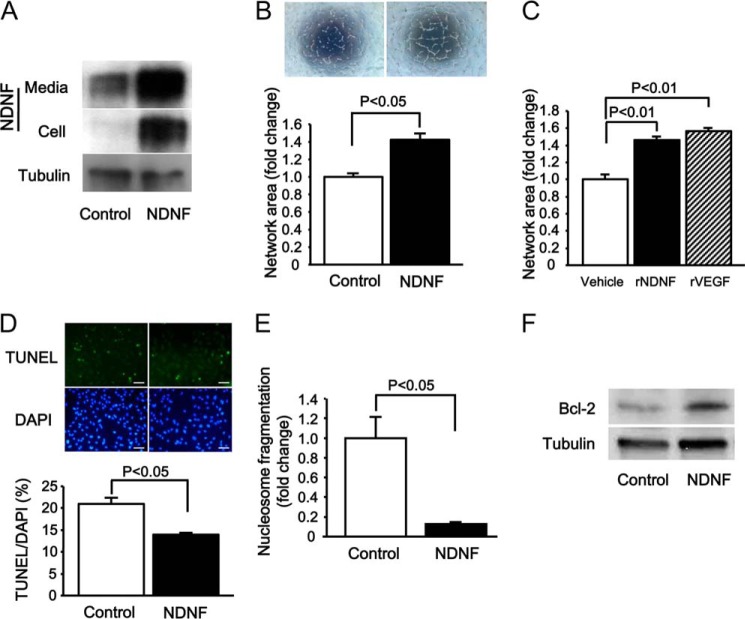FIGURE 2.
NDNF promotes endothelial cell network formation and survival in vitro. A, NDNF protein expression in medium and cell lysates from HUVECs as determined by Western blot analysis. HUVECs were transduced with adenoviral vectors encoding NDNF (Ad-NDNF, NDNF) or β-galactosidase (Ad-β-gal, Control) (multiplicity of infection of 25 each). B, HUVEC network formation in response to NDNF. After 24 h of transduction with Ad-NDNF and control Ad-β-gal, HUVECs were seeded on Matrigel-coated dishes for 16 h. Top panel, representative photographs of network formation. Bottom panel, quantitative analysis of network area. n = 4 in each group. C, HUVEC network formation in response to 16 h-treatment with recombinant NDNF protein (rNDNF)(200 ng/ml), recombinant VEGF protein (rVEGF)(50 ng/ml), or vehicle. n = 4 in each group. D, effect of NDNF on the frequency of TUNEL-positive HUVECs. HUVECs were transduced with Ad-NDNF and Ad-β-gal (Control) for 24 h, followed by subjection to serum deprivation for 48 h. Top panel, representative images of HUVECs stained with TUNEL (green) and DAPI (blue). Bottom panel, quantitative analysis of TUNEL-positive HUVECs. n = 4 in each group. Scale bars = 50 μm. E, effect of NDNF on nucleosome fragmentation of HUVECs. Nucleosome fragmentation of HUVECs following 48 h of serum deprivation was assessed by ELISA. n = 4 in each group. F, Bcl-2 protein expression in HUVECs after 24 h of treatment with Ad-NDNF or control Ad-β-gal as determined by Western blot analysis.

